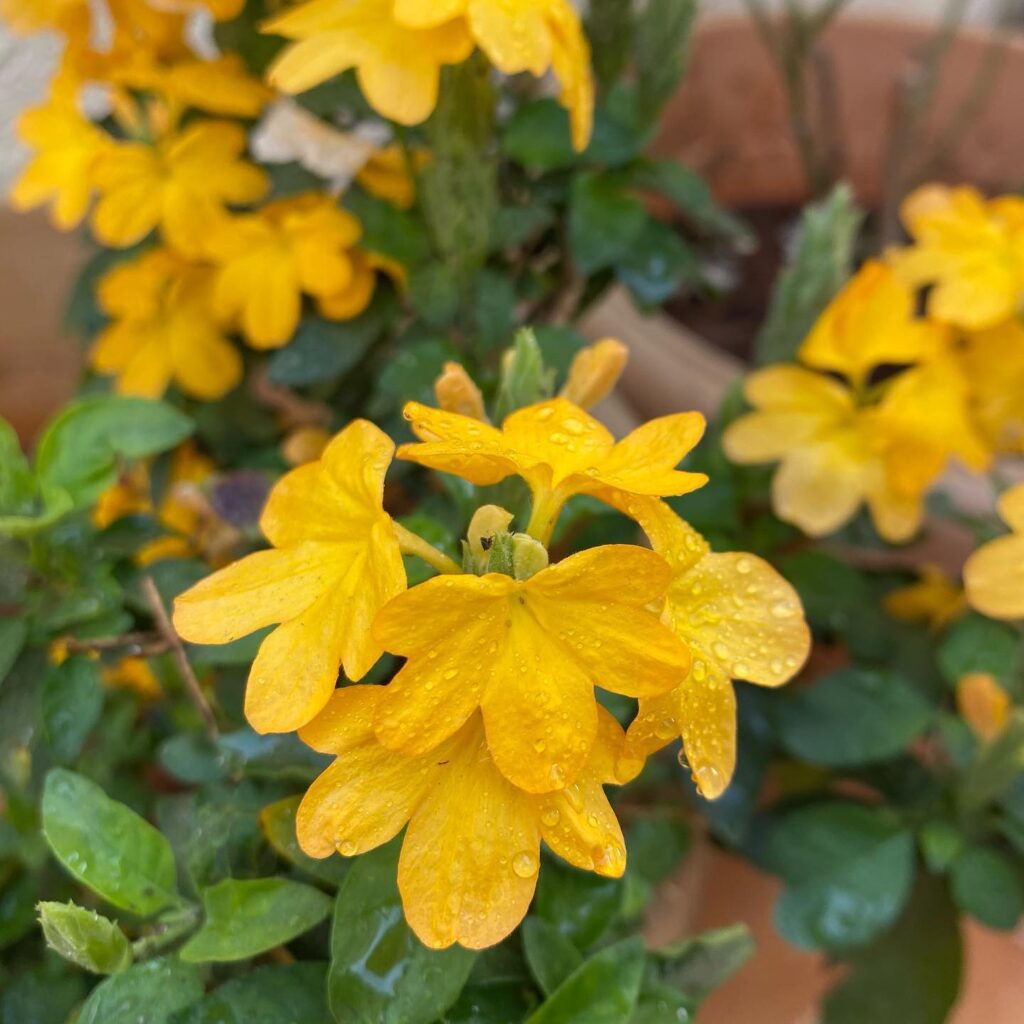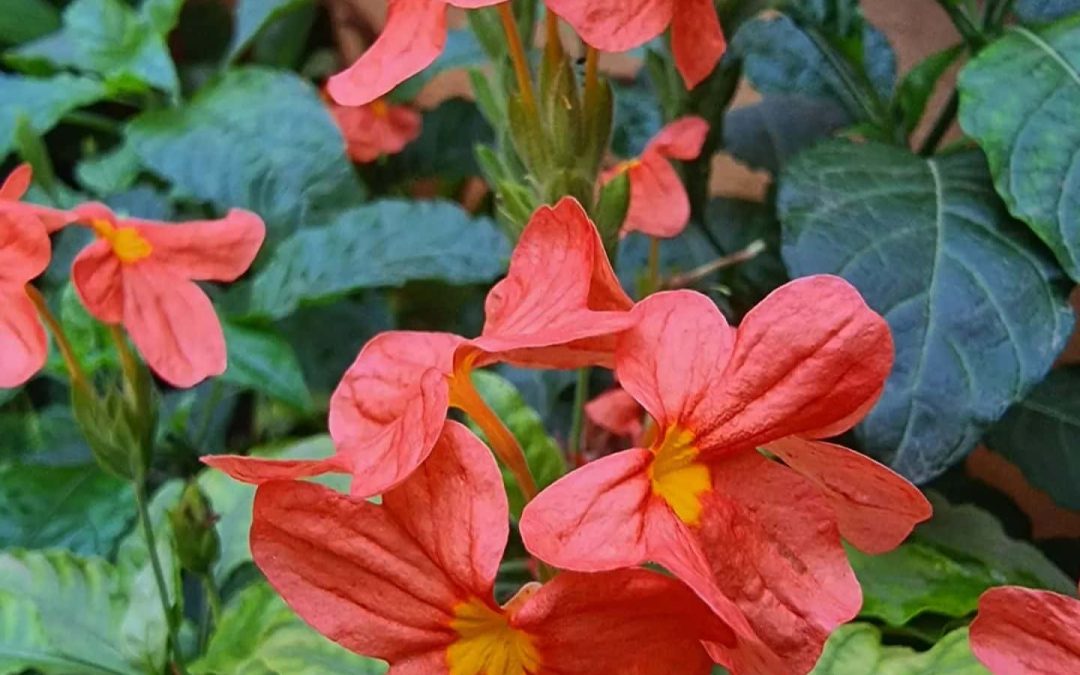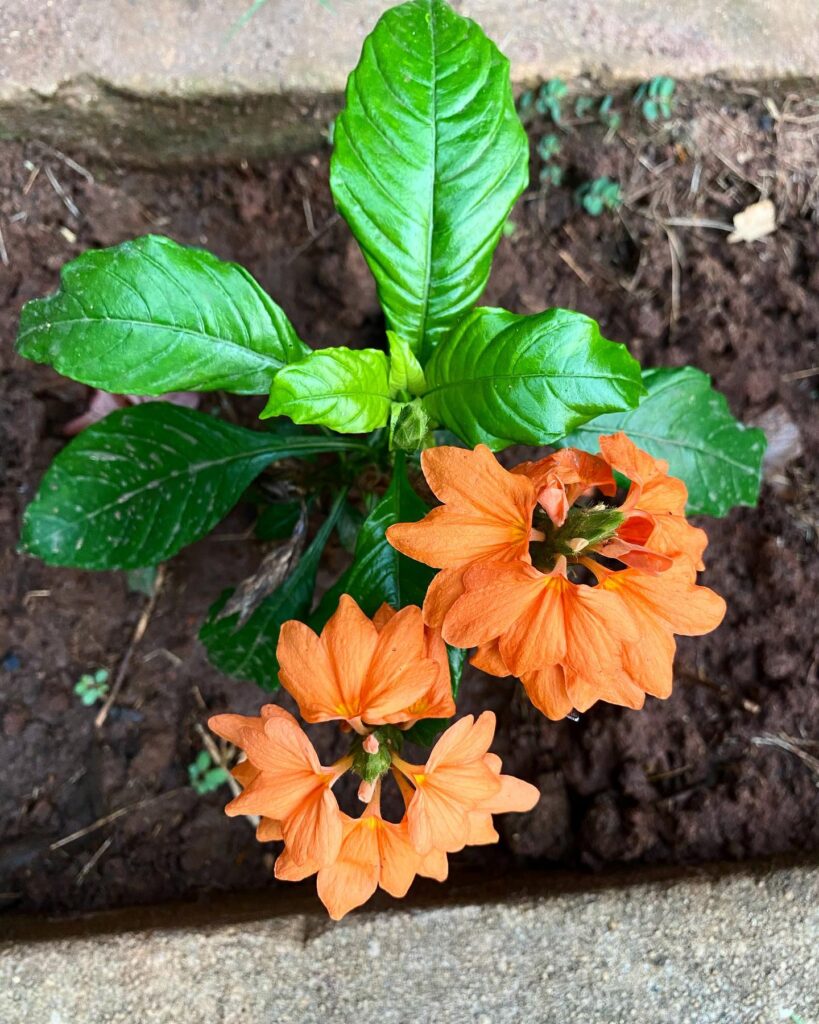How do you take care of a Crossandra plant?

Crossandra, or what we locals call a firecracker flower, is a tropical subshrub. It has some of the most standout flowers in the plant kingdom. The flowers are usually salmon or apricot colored but can also be shades of yellow, red, or pink.
The combination of dark green foliage and colorful flowers turns any space into a painting.
Crossandra is grown indoors and out and is one of the best plants to grow in Florida. They are very tolerant to heat and humidity – making it perfect for Floridians.
We recommend planting Crossandra as a container plant, but you can also plant it as a beautiful low border.
Are you ready to start growing your firecracker flowers?
Let’s get started!
Is Crossandra perennial or annual?
One of the many neat things about the Crossandra plant is that it’s a versatile plant that can be grown as an annual, perennial, or flowering houseplant, depending on where you live.
In more Northern locations, you should care for Crossandra as an annual and mix it with other sun-loving flowers in garden beds. It’s also an excellent plant for container gardens, pairing well with sun-tolerant coleus, lantana, and angelonia.
If you live in a place that doesn’t experience frost, like Florida, then your Crossandra can be treated as an evergreen perennial. You can have it blooming most of the year.
How do you keep Crossandra blooming?

While Crossandra plants can handle high humidity, they don’t like being too wet. That’s why having well-draining soil, and a pot with holes is so essential.
Once you have these basics covered, then it’s mostly a matter of making sure your plant gets enough light. Getting enough direct sunlight is probably the most important factor for good blooming.
Follow these steps to keep your Crossandra blooming:
- Remove any spent blooms and their stems. Pinching back young growing stems will help encourage bushiness and new blooms.
- Move your plant to a pot with holes and well-draining soil.
- Allow the plant to dry out juuuust a little. Blooming will be more abundant if the plant is allowed to dry out somewhat, without wilting, between waterings.
- Place in a location with lots of direct sunlight. This plant will produce nice foliage in low light or filtered light but will not bloom or will bloom very little in lower light conditions. In the ground, it needs full sun most of the day. Indoors it needs to be near a window allowing it as much light as possible during the day.
- Add fertilizer once a month with a balanced liquid fertilizer.
Why is my Crossandra dying?
Underwatering
If your Crossandra plant is dying, it’s almost certainly an under-watering issue. Typical signs that your plant needs water include wilting, sunken leaves, rapid flower or bud drop, and stunted growth.
While letting the soil dry out is great for blooming, you can’t keep it too dry for too long.
That’s the tough part about keeping your Crossandra in bloom!
Plants situated in direct sunlight near a heat source are more likely to suffer from under-watering related issues.
Spider mites
Spider Mites are small, near-transparent bugs that will slowly steal the chlorophyll from your plant’s leaves. Have a check under the leaves, most notably along the midrib, for small webs and gritty yellow bumps. You can look into Neem oil to help rid your plant of spider mites.
Whiteflies
Another critter to watch out for is the Whitefly. Although these small airborne critters shouldn’t produce too much damage, an infestation must be destroyed quickly to reduce the chance of them spreading. Once again, a light spray of bug-repellent oil should do the trick.
How to deadhead Crossandra
While deadheading your Crossandra flowers may not directly cause them to bloom, it will encourage new flower growth.
If you live in a more Northern (aka cold) region, you will need to wait until Spring to prune your Crossandra plants.
Otherwise, you can prune them at any time.
Simply follow the steps below to make sure you properly deadhead your Crossandra flowers.
- Gear up with freshly disinfected pruning shears and gardening gloves.
- Check the plants for any dead or wilted flowers.
- Grab the dead flowers by their base and cut the peduncle connecting the flower to the plant.
- The above-cutting process is deadheading, ensuring that the plant doesn’t spend its energy on seed production.
- You can also use your hands to pull off or pinch the flower off its pedicel.
- Make sure you don’t hurt the surrounding leaves and flowers.
Crossandra flowers for sale
Take advantage of this Crossandra flower guide by raising some plants of your own!
Visit our nursery at Troy Tropics and turn your backyard into an outdoor paradise.
Our team of greenery experts can help you decide on the best plants for your home.
Contact us through our online form or call us directly at (941) 212-1671.







